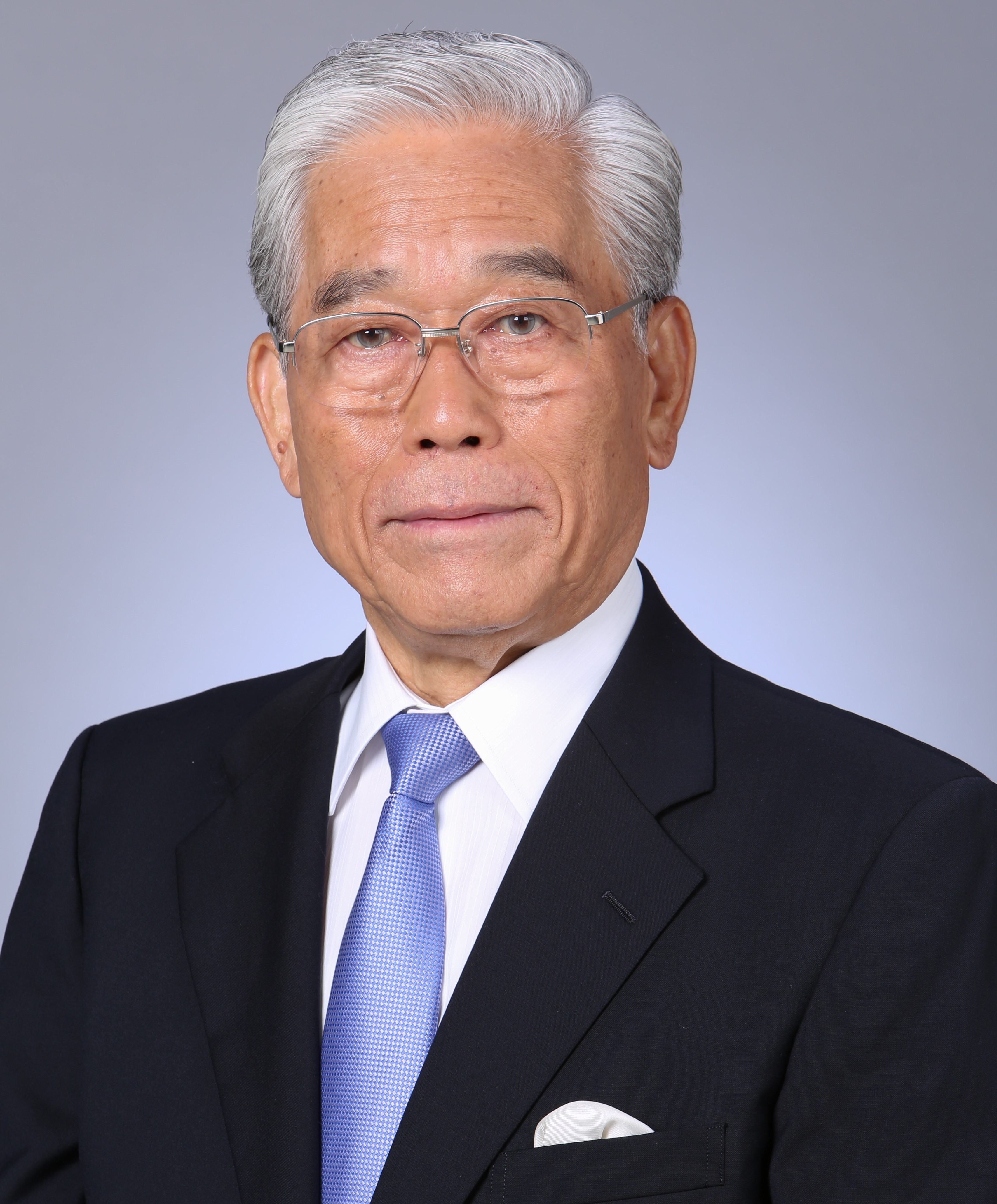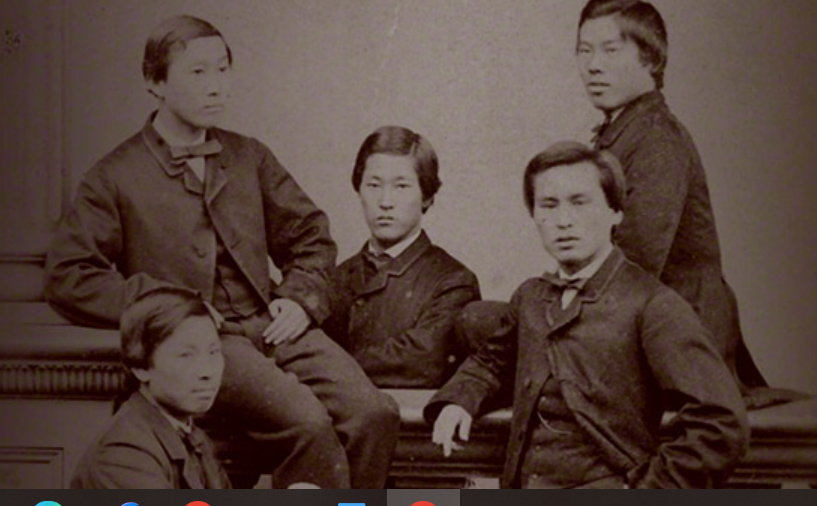PEOPLE
Chairman, Fujisankei Group
Executive Managing Advisor, Fuji Television Network, Inc.
Executive Managing Advisor, Fuji Media Holdings, Inc.

Industrial heritage is a set of component parts and spirituality
Kato: But the story there continues with ‘however’ isn’t it?
Hieda: That's right. I said, "However, it will be very difficult to make it happen.” I was told that the proposed structure would span many prefectures, and that it would include operational assets, so I felt that it would be very difficult. But I also strongly felt that it was worth doing. I was also excited that I might be able to witness the historic moment when the industrial heritage sites of the Meiji Period were inscribed on the World Heritage List.
Kato: However, we failed the tentative screening in 2006, and there were times when we were worried that the project, which at the time was titled "Sites of Industrial Modernization in Kyushu and Yamaguchi," would fall apart in mid-air.
Hieda: That was right.
Kato: The following year, the people who supported the project gathered in Hagi for a meeting, and you strongly supported the project at that time as well.
Hieda: I remember thinking that it was no joke when I heard people say that there is no industrial heritage site in Hagi. Many people associate industrial heritage with industrial products, but that is not all. What changed Japan was the spirituality of the Choshu Five and other key people, and more specifically, the spirituality of Yoshida Shoin, who nurtured them, right? The component parts and the spirituality of the people should be considered as a set, and at least, in my opinion, they are inseparable.

Kato: You are absolutely right. Currently, the Cabinet Secretariat has jurisdiction over the Sites of Japan’s Meiji Industrial Revolution, but at that time, it was necessary to obtain the understanding of the Agency for Cultural Affairs regarding what to do with operating assets, and breaking through this barrier was a major hurdle. In the first place, the Agency for Cultural Affairs did not recognize industry as culture.
Hieda: That is also because they view things in pieces. At the root of what led to Japan's revival is the human ability of the Japanese people to accomplish the Industrial Revolution in only half a century, such as their ability and conviction. It is about what are we going to do if we do not regard the outstanding national character of the Japanese people as part of Japanese culture and pass it on to the next generation. I have been saying this at the initiation ceremony since then. In the past, Japan was closed off from the rest of the world, but the Industrial Revolution brought it to the forefront. Now, instead of being closed off, we are sending out radio waves, in other words, information, from here. I want people to work with pride and a sense of responsibility.
Kato: That is wonderful.
Hieda: Anyway, I wondered how the Agency for Cultural Affairs viewed the great change at the end of the Edo period.
Kato: At the time, the Agency for Cultural Affairs was afraid of friction with Korea and the textbook issue. So, after much trial and error, a new framework was created. In essence, the Agency for Cultural Affairs was transferred to the Cabinet Secretariat, but this was an extremely difficult task. I am grateful for the cooperation of many people, including you, who helped us to achieve the registration while implementing regulatory reforms.
Hieda: It is a result of your passion. Everyone is saying so. It really has been a long road with peaks and valleys, and I think there were times when everyone was weak-kneed, wondering if everything would be okay, but you never gave up. Even when you ran into trouble, you got up with fortitude, sought a new path, and kept moving forward, didn't you? That's not something anyone can do.
Kato: I am very much obliged. Mr. Izumi Hiroto, then Director General of the Integrated Secretariat for Regional Revitalization, Cabinet Secretariat, told me that in his 38 years as a government official, this was the first time he had ever changed jurisdiction (laughs).
Hieda: Although Mr. Izumi's power was great, your passion and conviction that moved the hearts of many people are valuable. I strongly feel that spirituality is very important.
Representative Director, National Congress of Industrial Heritage
(Honorary Advisor, Kyushu Railway Company (JR Kyushu)
Senior Researcher, Industrial Heritage Information Centre
Honorary Advisor, Nippon Mining Co., Ltd.
The Ambassador of Supporting Kamaishi Hometown
Former Director of Nagasaki City World Heritage Office
Former General Manager, Nagasaki Shipyard and Machinery Works, Mitsubishi Heavy Industries, Ltd.
Chairman, Fujisankei Group
Executive Managing Advisor, Fuji Television Network, Inc.
Executive Managing Advisor, Fuji Media Holdings, Inc.
Advisor, Federation of Japan Port and Airport Construction Association
(Ex. Chairman of Specialists Center of Port and Airport Engineering)
Mayor of Nagasaki City
Former Director of the Sano Tsunetami Memorial Museum (currently known as Sano Tsunetami and the Mietsu Naval Dock History Museum)
Director of NPO Association for Thinking about Satoyama
Director of National Congress of the Industrial Heritage
Honorary Chief Priest Toshinari Ueda
Former Mayor of Omuta City
Archaeologist and Heritage Conservation Specialist
A fellow of the Japan Federation of Engineering Societies
Team Member of the Industrial Project Team Office for the Promotion of World Heritage Listing under Cabinet Secretariat
Governor of Kagoshima Prefecture
Mayor of Hagi City
Mayor of Uki City, Kumamoto Prefecture
The Former Employee of Nippon Steel Corporation
An Associate Professor of the Faculty of Science and Engineering in Iwate University
Chairman of the Tourist Guide Association of Misumi West Port
President of Kuraya Narusawa Co., Ltd.
Chairman of Izunokuni City Tourism Association
Director and General Manager of Gunkanjima Concierge
Producer of the Gunkanjima Digital Museum
Owner at Tōge Chaya
Chairman: Mr. Hidenori Date
President: Mr. Masahiro Date
Proprietor, Houraikan Inn
Representative Director of Egawa Bunko non-profit incorporated foundation
The 42nd head of the Egawa Family
Democratic Party for the People (DPP) Representative for Nagasaki Prefecture
President of the NPO, Way to World Heritage Gunkanjima
Representative Director
MI Consulting Group
President of Watanabe Production Group and Honorary Chair of Watanabe Productions Co., Ltd.
Member of the House of Councillors
Governor
Kagoshima Prefecture
World Heritage Consultant
Director and Dean, The Kyushu-Asia Institute of Leadership
Representative Director, SUMIDA, Inc.
Journalist, founder of the Shimomura Mitsuko Ikikata Juku School
Representative, Rally Nippon
Chairman, Sites of Japan’s Meiji Industrial Revolution World Heritage Route Promotion Council Director, National Congress of Industrial Heritage
Representative Director, General Incorporated Foundation National Congress of Industrial Heritage (Advisor, Public Interest Incorporated Foundation Capital Markets Research Institute)
Mayor of Nagasaki City
Policy Director at Heritage Montreal
World Heritage Consultant
Executive Director of Kogakuin University
Heritage Architect and International Consultant
Head of Data Acquisition at The Glasgow School of Art’s School of Simulation and Visualisation
Head of Industrial Heritage, Historic Environment Scotland, Edinburgh
Scottish Ten Project Manager, Historic Environment Scotland, Edinburgh
Mayor of Izunokuni City, Shizuoka Prefecture
Pro-Provost and Chairman of Council of the Royal College of Art. Heritage advisor of Canal & River Trust for England and Wales.
Dean of Tokyo Rissho Junior College
Professor emeritus of Keio University
Mayor of Kitakyushu City
At the 39th session of the World Heritage Committee convened in Bonn, Germany, from June 28 to July 8, 2015, the decision was approved to inscribe the Sites of Japan’s Meiji Industrial Revolution on the World Heritage list.
At a celebratory party held to mark the occasion, some of the primary promoters of the project spoke of their joy in achieving their goal and of the trials and tribulations to getting there.
Director and Managing Executive Officer, Hanshin Expressway Company Limited
Member, Board of Directors, National Congress of Industrial Heritage
Vice-Governor of Shizuoka Prefecture
Mayor of Hagi City
Chairman, Tokyo Metro Co., Ltd.
Mayor of Omuta City
Deputy Director-General, Lifelong Learning Policy Bureau, MEXT
Former Counsellor, Cabinet Secretariat
Mayor of Kamaishi City
Member, Board of Directors, National Congress of Industrial Heritage Counselor, Shimadzu Limited
Chairman of the Consortium for the World Heritage Inscription of Modern Industrial Heritage (Kyushu-Yamaguchi) and governor of Kagoshima Prefecture (as of 2015)